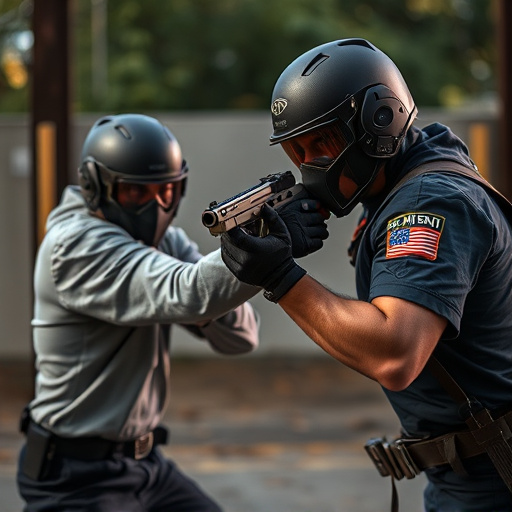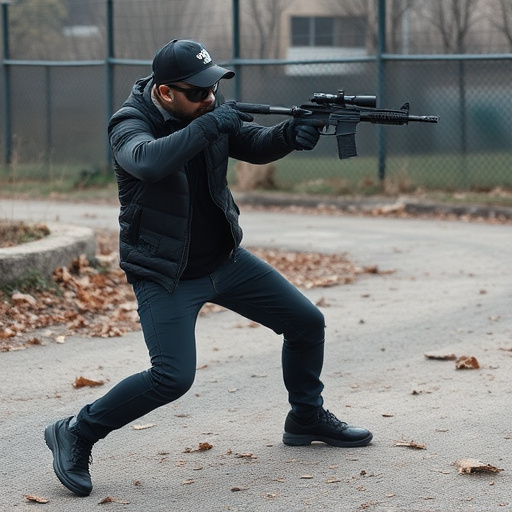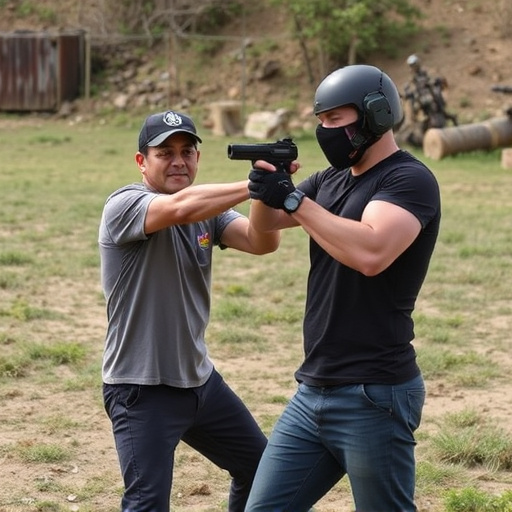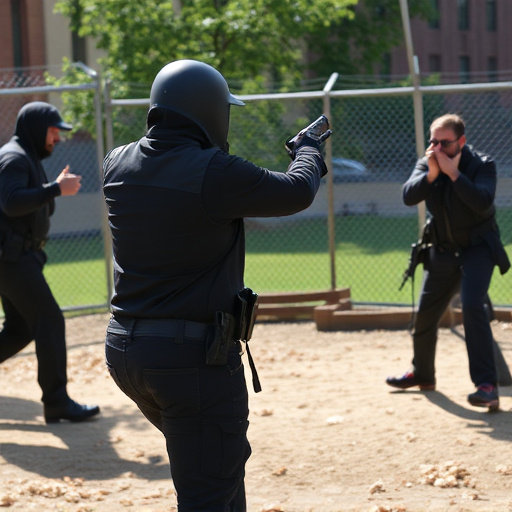For beginners considering stun guns as a personal safety tool, models with built-in safety features are recommended due to their ease of use and reduced risk. Unlike Tasers, stun guns stimulate the nervous system with high-voltage, low-current pulses, requiring no electrical conductivity and offering direct contact activation for immediate shock. Key safety features include automatic shut-off switches, training modes, LED lights, and laser sights, minimizing harm to bystanders while allowing users to escape or seek help. Beginners should train properly, understand local laws, and consider power levels and range limitations before selecting a stun gun with safety mechanisms tailored to their personal safety needs.
In the realm of personal safety, stun guns and tasers offer powerful tools for self-defense. Understanding their distinct differences is crucial for users, especially beginners looking into stun guns with safety features. This comprehensive guide delves into the intricacies of these devices, highlighting safety aspects that protect both users and bystanders. We’ll explore key considerations for choosing the right tool, ensuring peace of mind while navigating potential risks.
- Understanding Tasers and Stun Guns: A Comprehensive Overview
- Safety Features in Stun Guns: Protecting Users and Bystanders
- Choosing the Right Tool: Considerations for Beginners
Understanding Tasers and Stun Guns: A Comprehensive Overview

Tasers and stun guns are both non-lethal weapons designed to incapacitate individuals, but they operate on distinct principles. Tasers, officially known as Conductivity Energy Devices (CEDs), use electrical current to disrupt muscle control in a target, causing them to lose balance and become temporarily paralyzed. This technology was initially developed for law enforcement to subdue resistant suspects without the need for deadly force. On the other hand, stun guns generate high-voltage, low-current electrical pulses that stimulate the nervous system, leading to muscular contractions and disorientation.
For beginners considering stun guns with safety features, understanding these differences is crucial. Stun guns often have a simpler design and are easier to use due to their direct contact activation. They typically feature safety mechanisms like automatic shut-off switches and training modes for users to familiarize themselves with the device’s functionality. Tasers, while slightly more complex, offer various firing modes and can be effective at longer ranges. However, they require proper training for safe and effective deployment to minimize the risk of accidental discharge or excessive force.
Safety Features in Stun Guns: Protecting Users and Bystanders

Stun guns designed for beginners often incorporate several safety features aimed at protecting both the user and bystanders. One key feature is the stun gun’s range—shorter ranges typically mean less risk to unsuspecting individuals nearby. Many models also include a safety switch that requires the user to activate the device intentionally, preventing accidental discharge.
Additionally, some stun guns have LED lights or laser sights that signal the weapon’s activation without releasing a shock, providing a visual cue for users and bystanders alike. These safety features are crucial for responsible use, ensuring that individuals can protect themselves while minimizing harm to others.
Choosing the Right Tool: Considerations for Beginners

When considering self-defense options, especially for beginners, choosing between a taser and a stun gun involves understanding their unique capabilities and safety features. Stun guns with built-in safety mechanisms are often recommended for novice users due to their simplicity and reduced risk of accidental discharge. These devices typically employ electrical current to disrupt an assailant’s muscular control, enabling the user to escape or seek help.
For beginners, it’s crucial to opt for models featuring safety locks and trigger controls that prevent unintended activation. Additionally, training and familiarizing oneself with local laws regarding stun gun ownership and use are essential steps before making a purchase. Understanding the range, power levels, and any unique features of each device will empower users to make an informed decision, ensuring they select the right tool for their personal safety needs.
When choosing between a taser and a stun gun, understanding their distinct functionalities and considering your specific needs is key. For beginners seeking a safe option, stun guns with integrated safety features offer a more controlled and user-friendly experience. These devices are designed to minimize the risk of accidental discharge and protect both the user and bystanders, making them ideal for self-defense in various settings. By carefully evaluating your requirements and exploring the available options, you can select the best tool for your personal safety.
